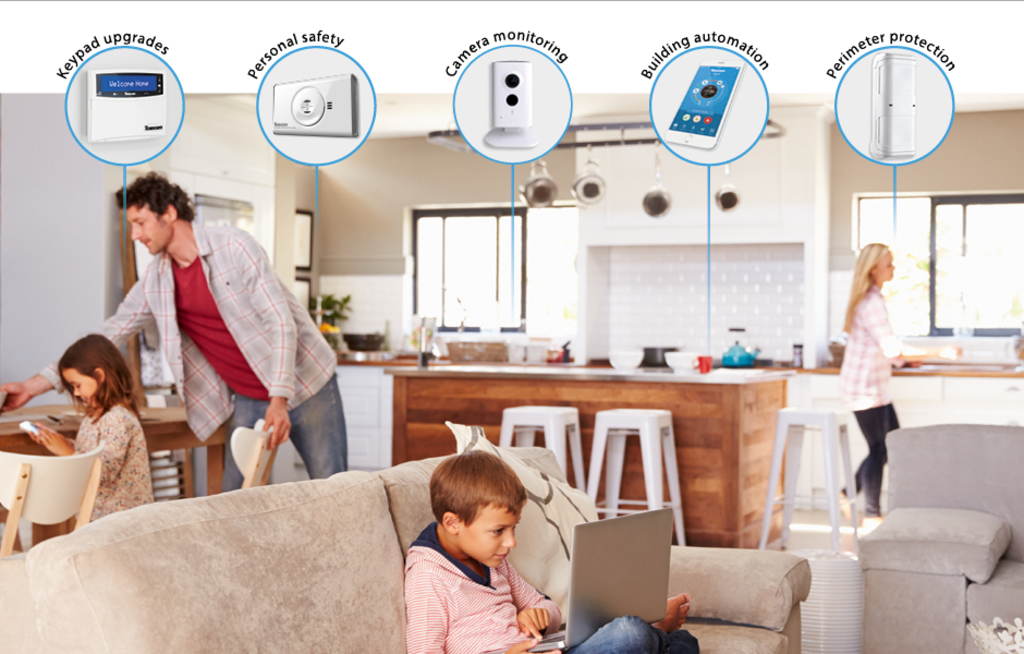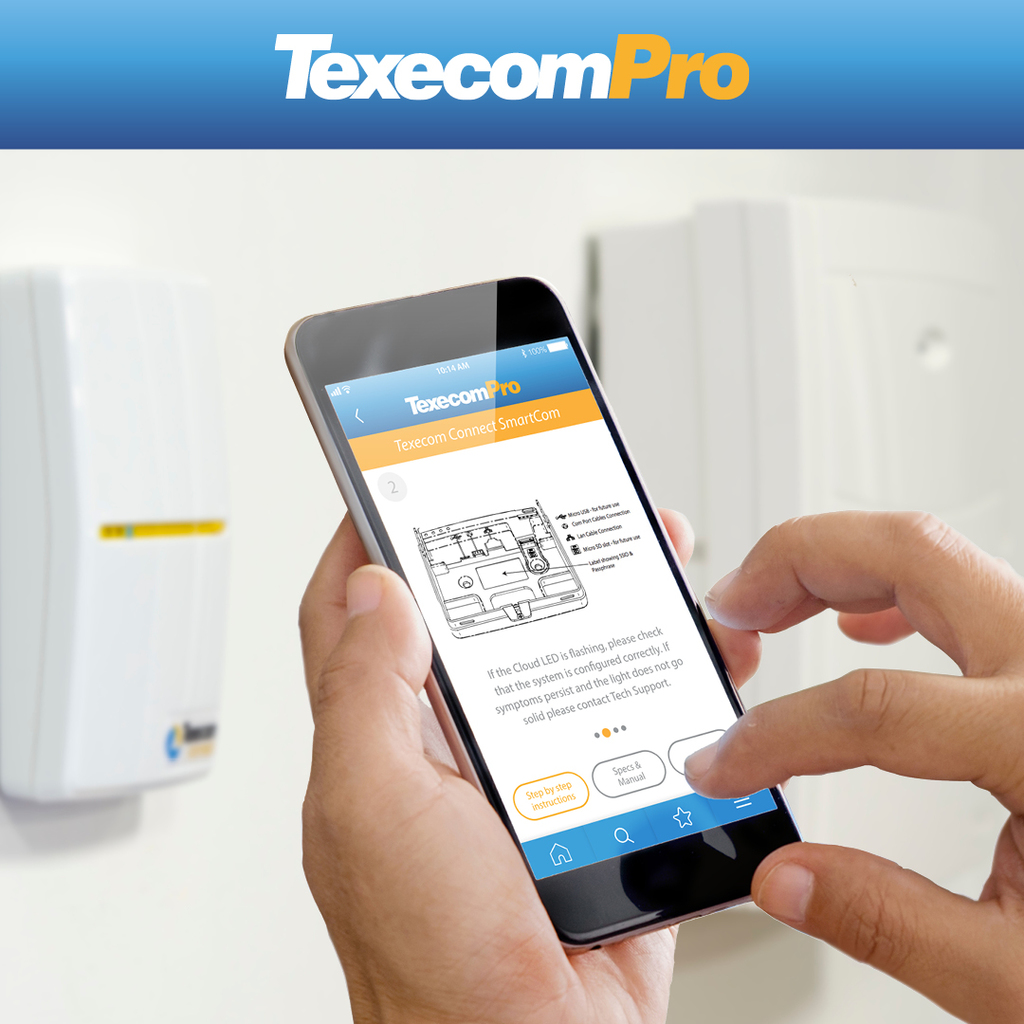
Brian Sims
Editor

Brian Sims
Editor
Clym Brown reveals how modern connective technology has put intruder panel manufacturers in a great position to develop new opportunities for installers.
WITH THE rising popularity of home automation, the IoT and cloud services, manufacturers are now producing security systems that are ideal for adding new devices and functionality. In this article I will discusses how digital services are transforming the security industry.
Commercial and industrial applications have always been the mainstay for many security installers. Insurance requirements for a police first response, the deterrent effect, the understandable costs of downtime and repairs after a break-in are all reasons all businesses need security systems.
The same cannot be said of the domestic market however. Residential users do not always appreciate the benefits of a professionally installed and maintained system, which means buying decisions are often based on price rather than system performance. Users’ expectations are often influenced by the price point of DIY kits or low-end systems from less-than-professional companies. While many of these systems inevitably underperform or don’t meet the required standards, they do affect the public’s perception of system costs.
Changing customer expectations
For too long security systems have been separated and isolated from the outside world, only providing information when the worst happens. They have lacked the connectivity and compatibility with external systems that could benefit from the intelligence and information they contain.
Smart home technology, intelligent buildings, IoT and cloud-based services have seen users’ expectations rise when making investments in any type of system. Because many manufacturers and service providers in other sectors have met those expectations, this accelerates demand for smarter solutions, but the intruder alarm market is lagging behind.
The fact is that there is still a yawning gap between what end users want and what most security systems currently deliver. Security and ‘peace of mind’ are the two main qualities that end users are seeking – but once a system is put in place, a large majority of people simply don’t use their security system.
A growing number of householders, however, are now interested in investing in intelligent devices for their homes – and many want to add security and protection to the services used. While the smart home sector includes some (non-security) vendors offering basic cloud-based alarm systems, most domestic end users do not want these. What they want is to take control of the entire system – to effectively own it and make their own choices as to what features it has and how it is used.
Texecom has looked closely at those householders most likely to embrace these emerging technologies and, interestingly, the main target audience differs from those that typically show an interest in professional alarm systems. While older people with higher levels of disposable income are most likely to opt for alarm systems, the growing market for smart technologies is amongst young professionals and middle-aged consumers who are already active users of mobile devices and apps.
These end users clearly want products that fit in with their lifestyles. Suppliers of most other technologies recognise this: personal computing, audio-visual, home automation and data handling and sharing are just a few examples. Most intruder detection systems, unfortunately, don’t fit in with how residential end users want to control and manage their homes, often not allowing the level of integration with other home systems that customers require.
Intruder alarms
The reality, however, is that many of today’s intruder alarm systems do feature advanced digital technologies that can deliver a world of possibilities and add considerable value. They can already achieve this, even while the core graded element of the systems continue to offer police first response or a credible bells-only solution to a professional standard. With many of these systems, where risks are high and insurance is essential, the end user can still do whatever the insurer demands. However, by partitioning a system’s control panel for example, its inherent capabilities can also be used to deliver other ‘lifestyle’ services without compromising on the alarm grading.
Today’s connected security technologies now allow end users to make their own decisions as to how alarm events are handled. If a user wants to be alerted to an intrusion before a criminal has forced an entry, that is simple to implement; if they want to verify external detections to filter out nuisance activations, that can also be done; if they want to share data from the system or use it to issue notifications about security, site status or personnel status (including monitoring family members, children, vulnerable and elderly relatives, etc.) it can be done without any complex additions to the system.
Additional services can be offered to fully exploit the potential of the control panel while preserving compliance with standards. This allows domestic users to benefit from credible security protection that also meets their demands for more lifestyle-centric features.
These new digital platforms are changing the landscape by introducing connectivity options that interface with leading third-party smart devices and transform the user experience. This means that security installers can now offer secure systems with the additional benefits of automation, smart management and flexible control, all from established and familiar control panels. These new technologies offer an immersive experience, allowing customers to take full control of the system, along with other peripherals such as video, lighting, heating, power management and smart control of household appliances.
Cloud-based services
It is an accepted part of today’s evolving technological landscape that security systems need to be resilient and robust, with automated health checks and simpler remote servicing. New emerging developments in the security industry will include cloud-based platforms that will enable security installers to manage multiple alarm systems from one simple interface, simultaneously. These will give installers enhanced control over their estate of alarm systems by allowing full management, similar to connections via existing software packages, but with simpler control.
These new cloud platforms will make it much easier for installers to deliver a higher level of support to their customers. Changes to system configurations will be able to be made ‘on-the-fly’, for example, so site visits can be minimised if the customer wishes to adjust certain system parameters. Cloud platforms will also simplify the task of scheduling remote service visits, as scheduled health checks will allow security systems to be interrogated remotel. This will also be useful for fault-finding and identifying potential issues before they become a problem for the customer.
Simple additions, like the ability to use templates to change settings across a number of panels, will no doubt reduce the need for programming and save security installers time when dealing with customers with large estates of control panels.
Another benefit of cloud-based services is that security installers will have no longer have to manage multiple copies of software. The platforms will be accessed via a standard web browser, any upgrades or software expansions will occur in the cloud, and so the interface will always be up to date whenever an installer logs in.
Apps
Another emerging digital development in the security industry is apps. Many of those currently in development will give security installers instant access to the very latest product information, manuals, guides, technical bulletins, news, training and other useful material, all from a mobile device.
It is likely that these apps will be easy to use and will be designed to offer fast navigation, thus simplifying the process of accessing relevant information quickly.
This article has hopefully demonstrated how digital services are transforming the security industry. From connected devices to cloud-based platforms and smartphone apps, the landscape is rapidly evolving. Customer expectations (both installers and end-users) are changing. A growing number of tech-savvy users now expect the same levels of connectivity, remote accessibility and east of use that they come across in other aspects of their life, whether it’s booking cinema tickets and flights or accessing their central hearing remotely.
It is time for security companies to step up and meet these expectations with appropriate technology that not only meets customers’ requirements, but exceeds them. In this way the security industry will keep do more than simply keep itself relevant – it will actually become an essential part of people’s lives in the years to come.
Clym Brown is marketing director at Texecom. For more information, visit www.texe.com/uk


